A new rendering has been released for 313-315 Bond Street, a two-tower mixed-use development in Gowanus, Brooklyn. Designed by Hamish Whitefield Architects and developed by Rabsky Group with $92 million in construction financing from G4 Capital, the 226-foot-tall structure will span 526,000 square feet and yield 298 condominium units with an average scope of 1,365 square feet, as well as 51,000 square feet of ground-floor commercial space, a cellar level, a 40-foot-long rear yard, and 52 enclosed parking spaces. President Union LLC is the owner and Sky Construction is the general contractor for the project, which is alternately addressed as 395 Carroll Street and bound by Union Street to the north, Carroll Street to the south, the Gowanus Canal to the east, and Bond Street to the west.
The new rendering, above, offers greater detail on the makeup of the exterior than the preliminary illustration seen below. The building begins with a multi-story podium with a grid of arched windows, with wider openings on the ground and second floors. Above, the 17- and 22-story towers feature square industrial-style windows and several stacks of balconies with curved corners that complement the geometry of the arches at the base of the building. The structure is primarily clad in red brick except for the pinnacles of the towers, which are shown enclosed in floor-to-ceiling glass and dark metal paneling.
Both renderings illustrate an architecturally cohesive sibling standing eight stories high to the south of the development site. However, it is unclear at the moment whether this structure is part of the current phase of construction.
Earthwork is currently underway with piling machines on site.
333 Bond Street is the only holdout between this development and Studio V Architecture’s 335 Bond Street at the southern end of the city block.
313-331 Bond Street’s anticipated completion date is slated for the fall of 2025, as noted on site.
Subscribe to YIMBY’s daily e-mail
Follow YIMBYgram for real-time photo updates
Like YIMBY on Facebook
Follow YIMBY’s Twitter for the latest in YIMBYnews

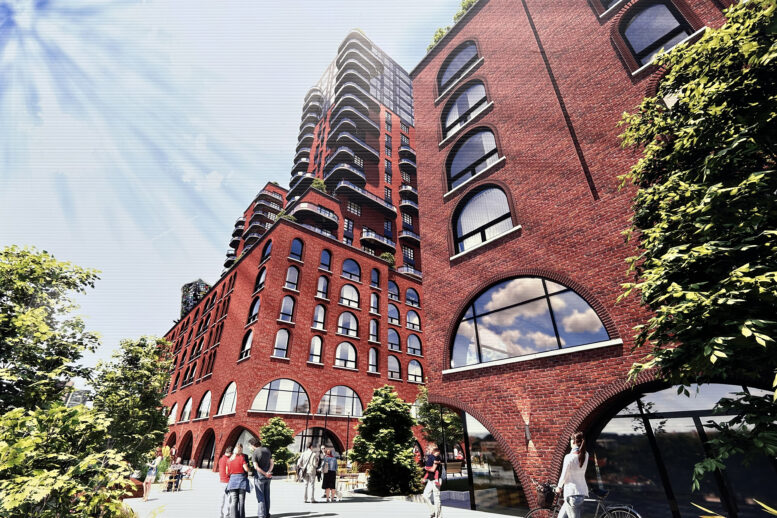

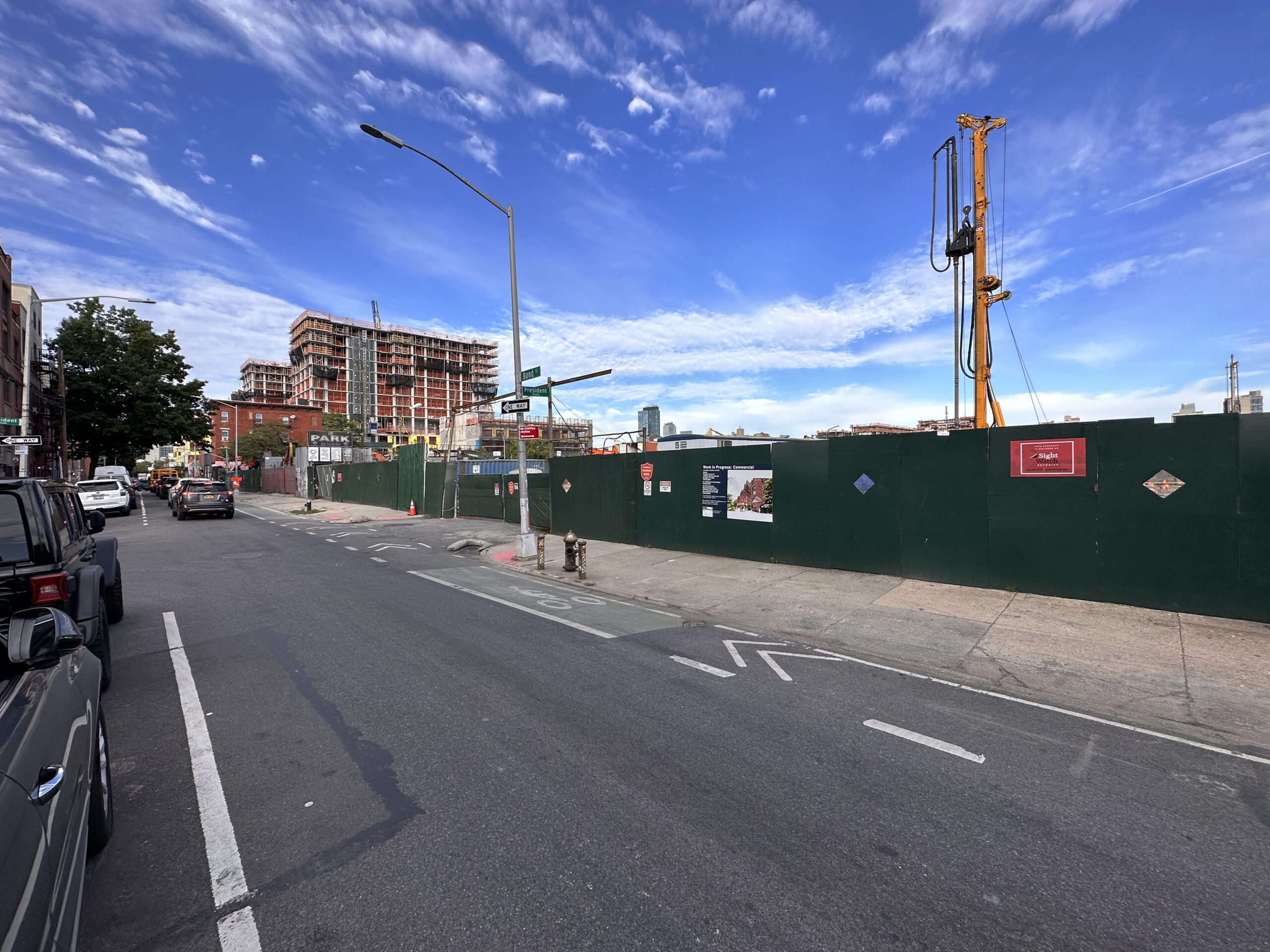
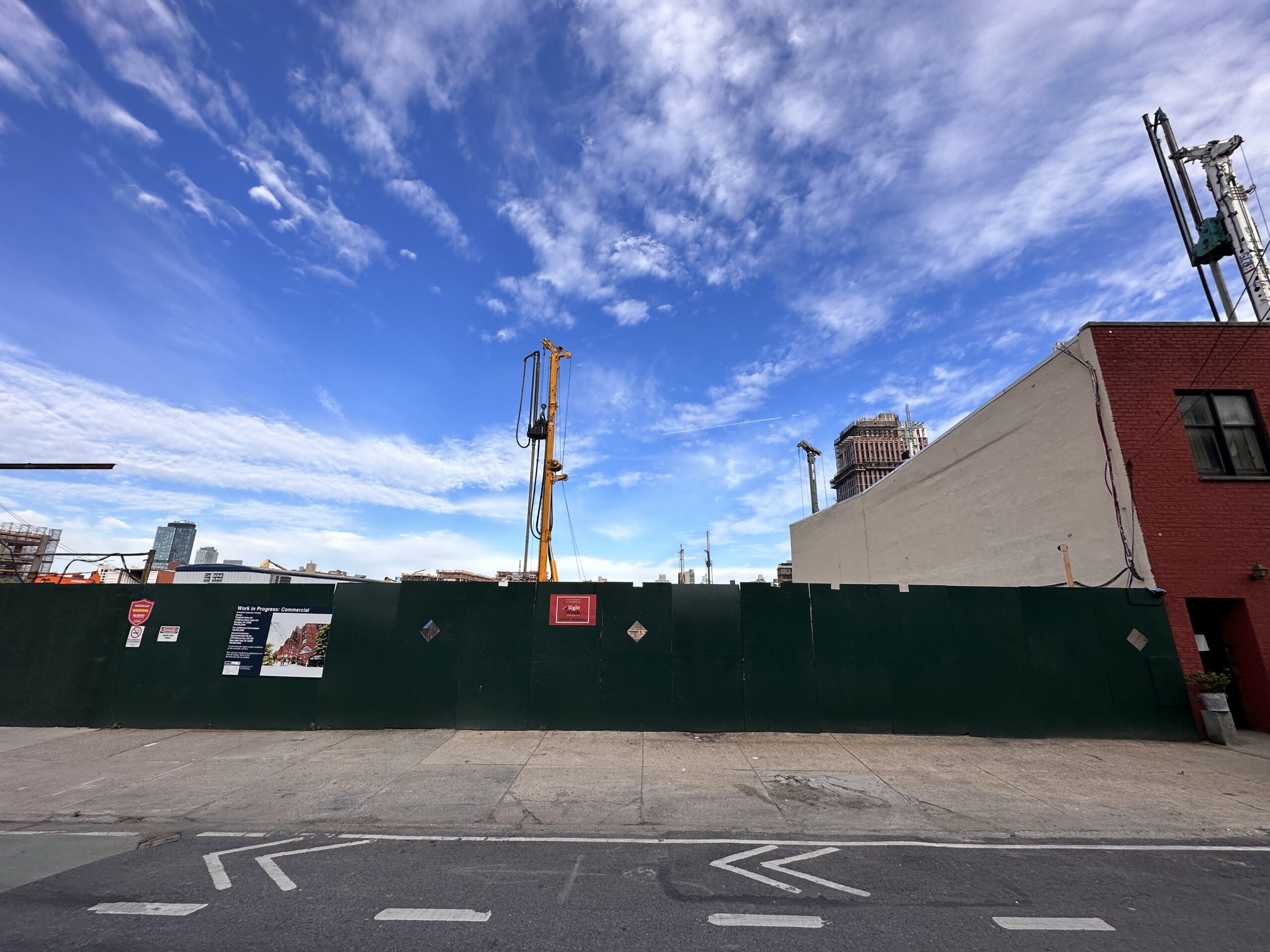

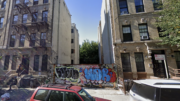
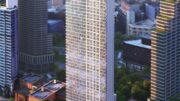
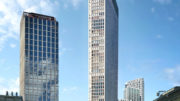
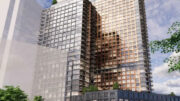
Top rendering has a nice feel of a building becoming a community.
You can’t go wrong with red bricks and arches.
WOO-HOO… #TEAMHOLDOUT! 🤗
Someone heard of the word arches, and their world just told them YES.
I can imagine the concept meeting starting with an intro of, “What is this half-circle object that just seems to make sense? Why has no one thought of this before? What can’t we do with an arch?”
We be on Opera with arches for everyone! Check under your window! Look at your arcade! Park your bike on an arch! That cake? It’s an arch! Family over for Thanksgiving? Replace them with an arch! So much more stable.
HEHEHHEHE. I’m reminded that Lou Kahn is quoted as saying:
“If you think of Brick, you say to Brick, ‘What do you want, Brick?’ And Brick says to you, ‘I like an Arch.’ … You can only do it if you honor the brick and glorify the brick instead of shortchanging it.”
I’m sure that whoever designed this building is aware of this quotation, but doesn’t understand it.
Yessir—what you’re smoking, por favor! Arches!
Red bricks are okay with arches that featured industrial-style windows, beautiful a university looks and a two-tower mixed-use development reported: Thanks to Michael Young.
Well, it’s interesting, but the finished product will tell. The holdout just might be the best part.
I wonder how much $$$ they offered the holdout because wow that is hilarious architects are like ya gotta be kidding hahah
swag mayor Adam 500,000 affordable housing moon shot
What’s Happening in Gowanus?
The Canal
The Gowanus Canal Was Designated a “Superfund Site”
For over a century, the banks of the Gowanus Canal were line with industry and manufacturing companies, which released their toxic waste into the canal water as well into the ground. In 2010, the federal government identified the Gowanus Canal as one of the most toxic waterways in the entire country. It’s filled with toxins that pose serious public health risks. As a result, it was designated a “Superfund” site, and in 2020, the Environmental Protection Agency began a $1.5 billion cleanup of the canal.
The Land
The Gowanus Neighborhood Has Been Rezoned
In 2021, 82 blocks in Gowanus were changed from mainly industrial use to allowing residential development. The existing industrial buildings being demolished in the neighborhood will soon be replaced by dozens of apartment towers reaching up to 30 stories tall.
Most of the Rezoned Land is Highly Toxic
The vast majority of development sites in Gowanus (see map, below) are filled with cancer-causing toxins due to a century of industrial use, and have been classified by NY State as “Brownfield sites.” Some have toxins as deep as 150 feet.
The Infrastructure
Sewage Frequently Flows Into the Canal
During heavy rains, raw sewage flows into the canal because it exceeds the current sewer system’s capacity. As a result, the EPA has demanded that the City build two enormous “retention” tanks to keep excess sewage from going into the canal.
What’s The Problem?
The Land is Not Being Cleaned Up Fully, Leaving Toxins in the Soil
All of these sites need to be cleaned up before residential buildings can be built. State law requires they be cleaned to “pre-disposal conditions”—as they were before industrial poisoning. However, this is NOT happening. For instance, at some sites, where toxins reach as deep as 150 feet, the State is only calling for developers to clean less than the top 8 feet of contaminated soil.
Toxins Left in the Soil Can Enter Buildings And Threaten Future Residents’ Health
The State itself acknowledges that when certain toxins (“volatile organic compounds” or VOCs) are left in the soil, they can “move into buildings and affect the indoor air quality.”
Rather than remove them entirely, the State has decided that on the development sites, these toxins will be covered, or “capped,” with a slab of concrete. This method of dealing with toxic land, known as creating a “vapor intrusion barrier,” is very risky, and is so unreliable that these sites must be monitored every year, in perpetuity, to ensure that dangerous vapors haven’t penetrated people’s residences.
The Most Deeply-Affordable Housing Is Planned for the Most Seriously Toxic Site
Some of the worst contamination can be found at “Public Place,” a City-owned plot at the corner of Smith and Fifth Streets which for decades housed a manufactured gas plant that created waste known as “coal tar.” Exposure to coal tar has been linked to a variety of cancers. Coal tar at this site has been found to a depth of 150 feet.
The cleanup proposed for this site is woefully inadequate, and only the top 8 feet of soil will be cleaned. It is also the only site in the entire rezone where 100% of the 950 apartments target lower incomes, including units for unhoused individuals and seniors. A school has also been proposed for this site.
Placing the lowest-income residents in danger in this way raises Environmental Justice concerns.
Toxins Are Not Confined To Their Original Sites and Threaten the Health of Existing and Future Residents
Large “plumes” of migrating carcinogenic coal tar have already been found far from their original site in Gowanus, and with flooding and rising groundwater levels from climate change, these and other carcinogens can wind up underneath existing homes and intrude into them.
Fumes from the Toxic Construction Sites Pose a Danger to the Community
The disturbance of the land at these toxic construction sites has caused air monitors to be set off by toxic fumes reaching dangerously high levels, with the community not notified and only discovered after kids in the neighboring playground smelled it and reported it to our electeds.
The Gowanus Canal will be Re-Contaminated With Toxins
Without a full cleanup, toxins from the sites surrounding the canal will seep right back into the canal and re-contaminate it, thereby not only wasting $1.5 billion in taxpayer dollars, but also returning the canal to its dangerously toxic state.
Sewage Retention Tanks Are Not Being Built, and Sewage will continue to flow into the canal—and into our homes
The City is not following the EPA’s timeline to build the required retention tanks, and at this point says that they won’t be complete until after 2030. And the retention tanks are only meant to deal with the current number of residents in the community; they don’t take into account the additional sewage that will be produced by 20,000 planned future residents.
Without the required retention tanks, and given increases in rainfall as a result of climate change, sewage will (and has) backed up into people’s homes.
Very Good design for the community.